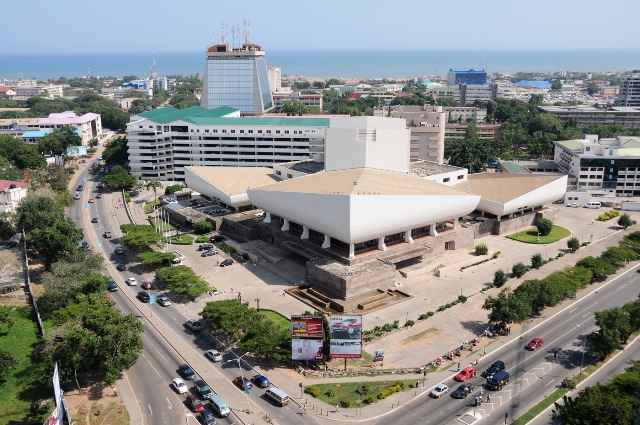Soft commodity prices, disruptions to oil and gas production, and a depreciating currency saw Ghana’s economy slow in 2016, though the country’s new government is expected to benefit from a strong rebound over the coming year.
Ghana closed out 2016 with a new head of state. Nana Akufo-Addo, leader of the opposition New Patriotic Party (NPP), defeated John Dramani Mahama from the National Democratic Congress in the December presidential election.
The NPP, which has outlined an intensely pro-business agenda, also won a clear majority in the parliamentary election, with a net gain of 49 seats in the legislature, taking its total to 170 in the 275-seat body.
A sluggish environment
The result – which marks the third peaceful transfer of power between parties in the past two decades – has widely been seen as voters’ reaction to the shifting economic climate in the country.
While remaining well above the rates seen in advanced economies, the rate of GDP expansion eased in 2016, with year-end IMF estimates revised down to 3.3%, below the mid-year forecast of 4.1% and 3.9% growth posted in 2015. This is 10 percentage points lower than the country’s record high of 14% in 2011.
The economy was dragged down by weak oil prices, a fall-off in output from the Jubilee oil field due to technical problems and by weather damage to some key crops, in particular cocoa. A strengthening dollar and depreciating currency also drove up import costs and slowed household consumption, while load shedding – known locally as dumsor – also disrupted manufacturing output.
Though for 2016 Ghana’s economy is thought to have expanded at its slowest rate in more than 25 years, the IMF expects a solid rebound in 2017.
Increased hydrocarbons output from new fields and the clearing of blockages in the production and transfer pipeline, combined with higher energy prices, will see GDP growth rise to 7.3% in 2017 and 8.3% in 2018, the fund said in its most recent “World Economic Outlook”, issued at the end of October.
Challenges remain
Nonetheless, Ghana’s economy still faces big obstacles to growth.
In its most recent review of Ghana’s $918m extended credit facility, released at the end of September, the IMF said the country’s economic outlook remains challenging, and that fiscal risks remain elevated, though there has been progress in stabilising the macroeconomic situation and reducing financial imbalances.
One risk it identified was a failure to keep the state deficit under control, which it said was key to further reducing refinancing risks in 2017. While there was no budgetary blowout, Bank of Ghana (BoG) figures from November showed a budget deficit of 5.9% at the end of the third quarter, above the targeted ceiling of 3.9% for the year.
Current spending, particularly on public sector wages, has accounted for a large portion of increased expenditures over the past few years, following the government’s shift to a consolidated salary system for all employees. Debt has also risen on the back of a strengthening dollar, which have pushed up the local-currency value of payments for the country’s dollar-denominated Eurobonds.
Though the government had managed to keep spending within projected levels, and in recent years has increased revenues as a percentage of GDP, lower commodity prices brought revenues below estimates, widening the deficit gap. The BoG, however, predicts that this will narrow in 2017.
Light headwinds still blowing
The larger-than-expected deficit was not the only negative impact to threaten the economy during 2016 and beyond.
A report issued by the BoG in late November said weak domestic growth conditions could further slow the rate of expansion. These conditions, the bank stated, are underpinned by slow global demand, persistently low commodity prices and disruptions to oil and gas production.
Balancing these risks against the threat of further heating inflation, on November 21, at its final monetary policy committee meeting for 2016, the BoG cut its policy rate for the first time in six years, by 50 basis points to 25.5%.
Inflation began to ease in the latter part of the year, with the November consumer price index (CPI) running at 15.5% y-o-y, well off its 19.2% spike in March.
Much of the inflationary pressure came from the non-food component of the index, which posted an annualised 18.7% rise in November. The increase was driven upwards in part by the transport segment, which rose 27.8%, and education, up 25.7%. By contrast, the food and non-alcoholic beverages component rose by a more modest 9.3% in November, 0.6 points higher than the previous month.
While the IMF has predicted Ghana’s inflation could gather pace in the last months of the year, closing out 2016 at 17%, it also forecasts a return to a downward trajectory in the new year, falling to 9.9% in 2017 and 7% in 2018.
The easing of inflationary pressures was aided by the relative stability of the cedi in recent months, which depreciated by only 4.3% through to October before dipping to 9.9% in December due to uncertainty surrounding the elections.
The cedi’s strength in the first 10 months of 2016, however, meant that the cost of imports did not rise too much during the year, a situation the BoG said was likely to be maintained into 2017, with a positive outlook for the currency.
Source: Oxford Business Group



